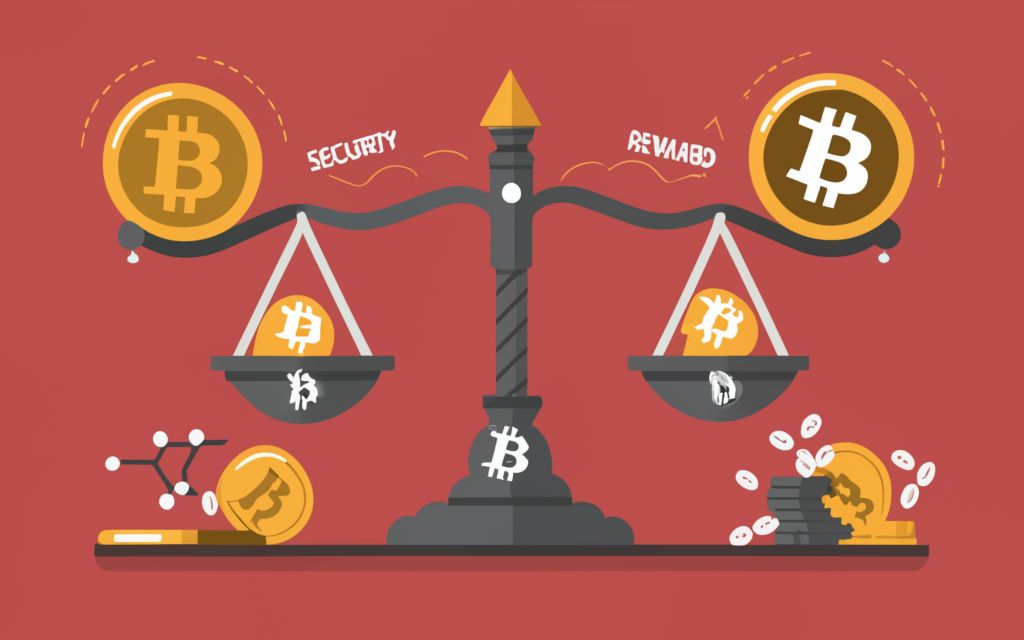The Perils of Cryptocurrency Trading
The disruptive nature of cryptocurrencies as financial innovations brings high profit potential but also significant risks surrounding volatility, regulations, and security. Lack of asset backing and oversight feeds speculation-driven price swings. Hacks drain user funds while scams trick novice traders. Hence developing mitigation strategies proves essential.
Only Invest What You Can Afford to Lose
Crypto’s volatile nature means investments may lose most or all value overnight. Hence investors should only risk 1-5% of savings, treating holdings as speculative assets. Maintaining emergency cash reserves, paying off high-interest debts first, and saving for retirement should take priority over crypto allocation to avoid overexposure threatening financial health.
Thorough Due Diligence Prevents Disaster
Wise traders thoroughly research projects before trading or investing to avoid falling victim to “rug pulls” or exit scams from inauthentic projects. Reviewing leadership reputations, confirmed partnerships, transparency reports, community reception and growth rates helps validate legitimacy and dedication. Identifying development red flags like pump and dump schemes keeps investments safer.
Choosing Reputable Trading Platforms
Selecting exchanges with lengthy uptime track records, positive public reviews documenting issue resolution, efficient customer support, robust accounting practices, transparency reports, and insurance coverage indicates enduring security investments protecting user assets. Leading examples include Coinbase, Gemini, Kraken and Crypto.com. Always check regional availability.
Enhancing Password Hygiene
Despite their hassle, strong unique passwords restrict unauthorized access, especially when paired with two-factor authentication. Random word stringing with special characters and numbers boosts entropy against brute force attacks. Mandatory password changes via prompts limit exposure periods from possible breaches. Password manager usage simplifies creation and storage.
Understanding Over-The-Counter Trading
High net worth traders requiring liquidity for large block transactions rely on OTC desks facilitating direct trades with settlement partners at negotiated rates avoiding exchange limitations. Custom quotes allow minimizing price slippage for sizable transfers. Professional services bring personalized advice and efficient settlement infrastructure in return for fees.
Protecting One’s Assets
Utilizing hardware or software wallets rather than storing funds long term on exchanges removes assets from potential centralized points of failure. Maintaining competent antivirus protection and avoiding phishing links thwarts malware attempts to steal wallet keys or drain connected balances. Monitoring account activity ensures quick fraud detection prompting asset transfer to new secure wallet addresses.
Access Control Through Multi-Factor Authentication
Activating 2FA introduces critical secondary account access verification even if passwords are compromised via one-time codes from authentication apps or FIDO device login handshakes. Allowing trusted devices eases repeated input annoyance. The extra barriers deter most infiltration attempts targeting personal data or assets. Maintaining backup codes and recovery keys proves essential however.
Understanding Biometric Authentication Tradeoffs
Biometrics like fingerprint or facial recognition tied to device ownership enhance crypto account security through uniqueness and convenience yet remain vulnerable to device theft. Spoofing also threatens reliability for facial scans. However biometrics combined with secondary 2FA during high-risk transactions or withdrawals provides excellent protection overall by fortifying the perimeter.
Mitigating Risk Through Diversification
Distributing assets across various cryptocurrencies smooths volatility through avoiding concentration within a single project. Bitcoin and ether maintain high liquidity during selloffs while mid and low cap altcoins allow measured exposure to high upside potential. Stablecoins preserve capital amid downturns. Maintaining an indexed, benchmarked crypto portfolio crafted around measured risk tolerance targets further moderates risk.
Navigating the Volatile Landscape
While crypto markets tempt with visions of rapidly amassed fortunes, realize such outcomes stay improbable without assuming significant risks. However prudent position sizing, security preparations, platform vetting, and diversification allow enjoying upside opportunities while moderating downside hazards through risk management discipline. Mastering safe habits lets traders thrive over the long-term.
FAQs
What metrics help determine risk-adjusted returns in crypto?
Key ratios like the Sharpe Ratio quantify return beyond baseline asset volatility while metrics like beta coefficient, price volatility and valuation ratios contextualize performance. Technical analysis via Bollinger Bands signals trend reversals. Always use stop-losses to enforce risk limits.
How can cryptocurrency traders identify exchange security red flags?
Warning signs include missing transparency documentation, inability to validate proof of reserves, lack of clear regulatory compliance, underdeveloped token custody protocols, vulnerabilities visible via penetration testing reports, limited liquidity partner discloses, missing key employee identities, and hesitance or opacity around security questions.
What safe storage solutions help secure cryptocurrency assets?
Reliable storage platforms include hardware wallets (Ledger, Trezor) using offline private keys, paper wallets with QR codes isolating keys, and specialized vault storage solutions like those from Coinbase, Gemini or BitGo providing regulated custody through asset segregation and insurance.
Is it safe to store cryptocurrency assets on an exchange long term?
Exchanges still remain targets for sophisticated hacking groups and internal fraud. Storing small trading balances on reputable exchanges stays reasonably safe through insurance coverage but holdings meant for long term buy and hold investing deserve offline storage solutions like hardware wallets instead for optimum security.
How can traders best educate themselves to avoid cryptocurrency scams?
Reading consumer advisories from government regulators, investigating thought leader commentary on social media forums like Crypto Twitter, bookmarking educational portals offered by secure exchanges, enabling scam warning browser extensions, attending industry conferences, and double checking every request for funds or credentials trains skepticism.
What techniques help crypto traders control their risk appetite?
Defined portfolio allocation percentages across assets moderates risk while concentration limits avoid overexposure. Stop-losses automatically exit positions at pre-set threshold losses. Trailing stop orders follow profitable trades locking in gains. Checklist trading plans enforce systematic discipline. Setting clear loss and liquidation rules curbs emotional decisions.
What is the most secure way for high net worth traders to acquire cryptocurrency? Over-the-counter (OTC) trading desks offer private quotes for block transactions above exchange limits and negotiate prices directly with settlement partners providing fast settlement finality, customized liquidity solutions, and personal advisory services to high net worth clients in return for transparent fees avoiding public exchange management.




